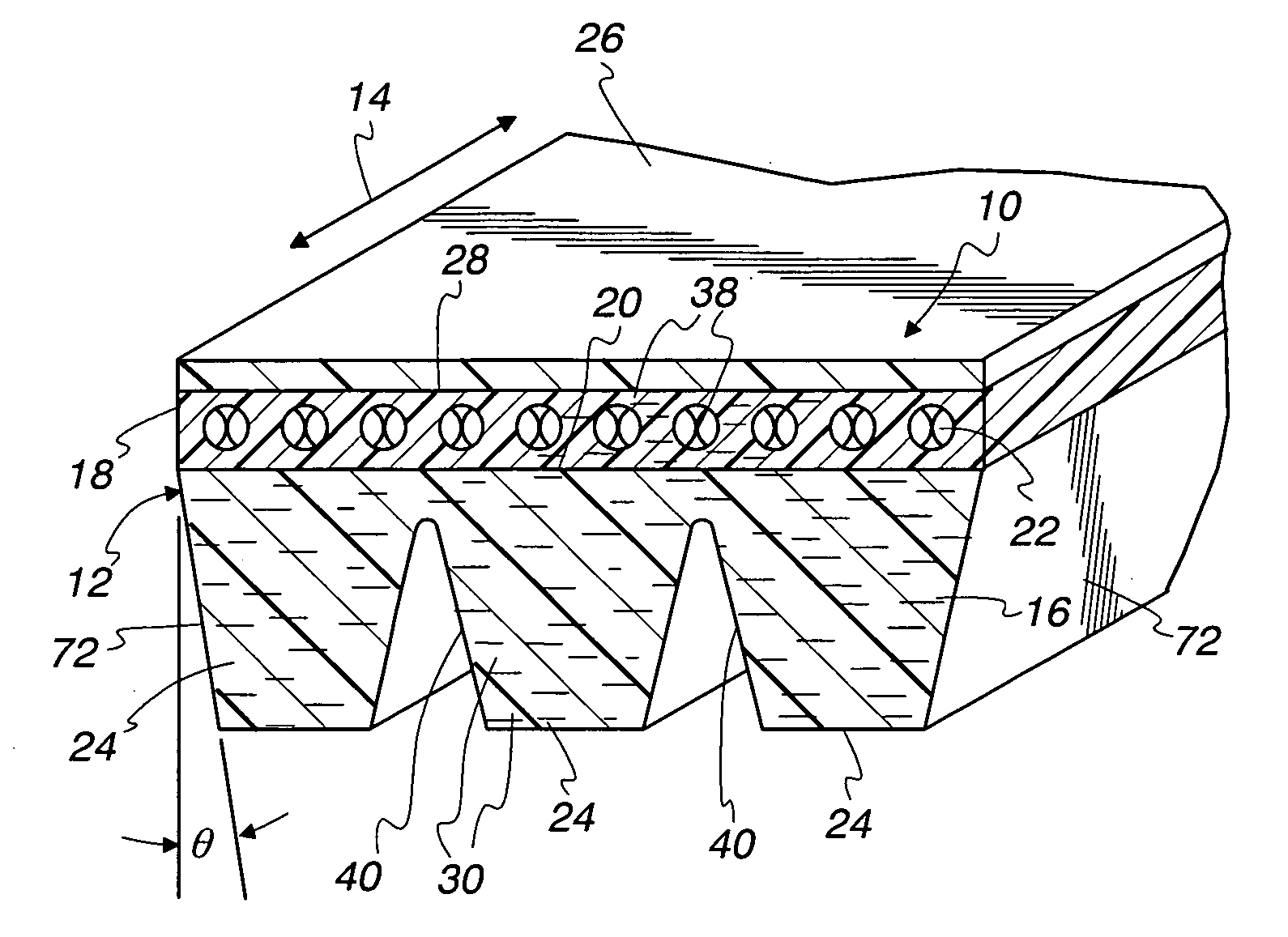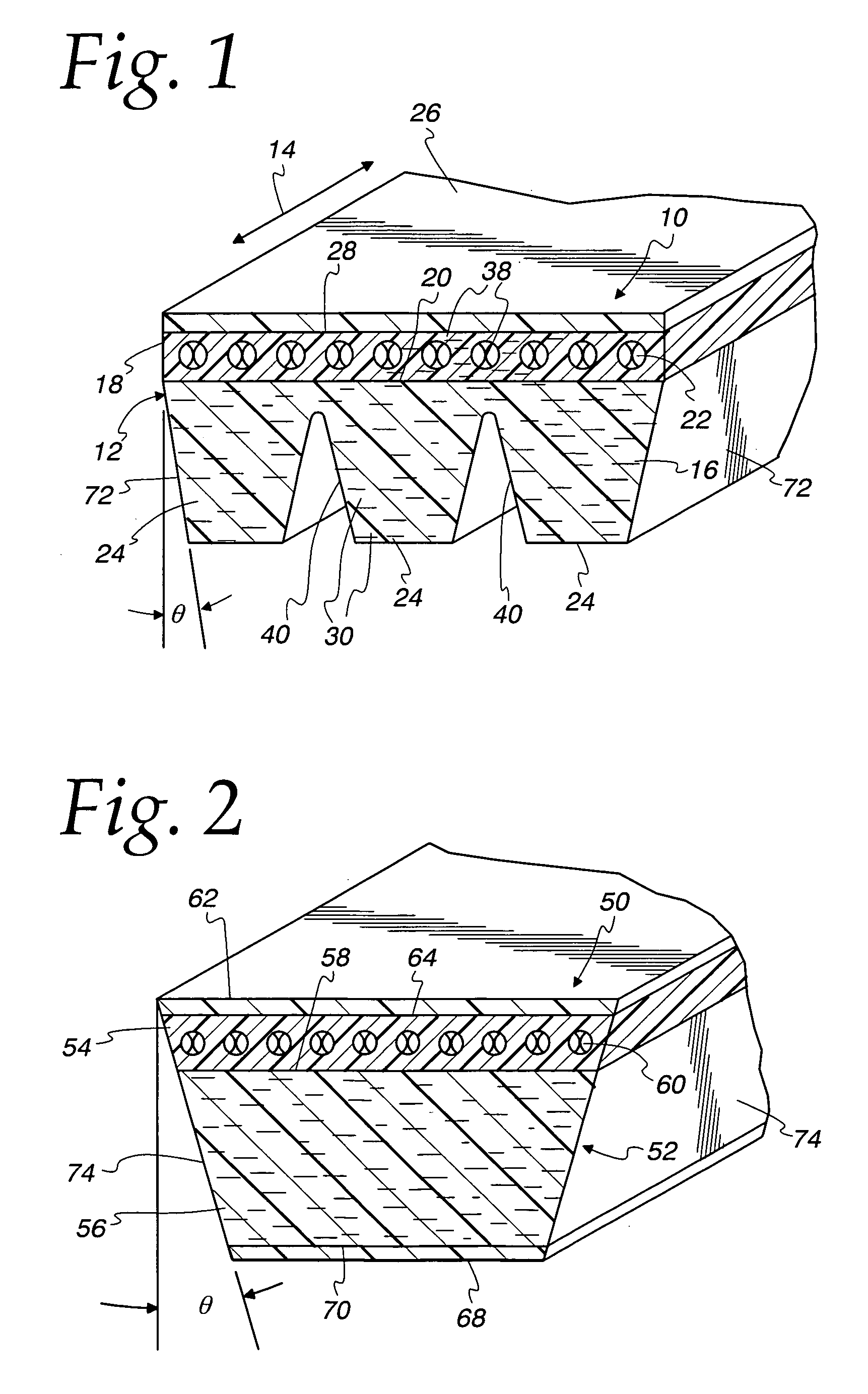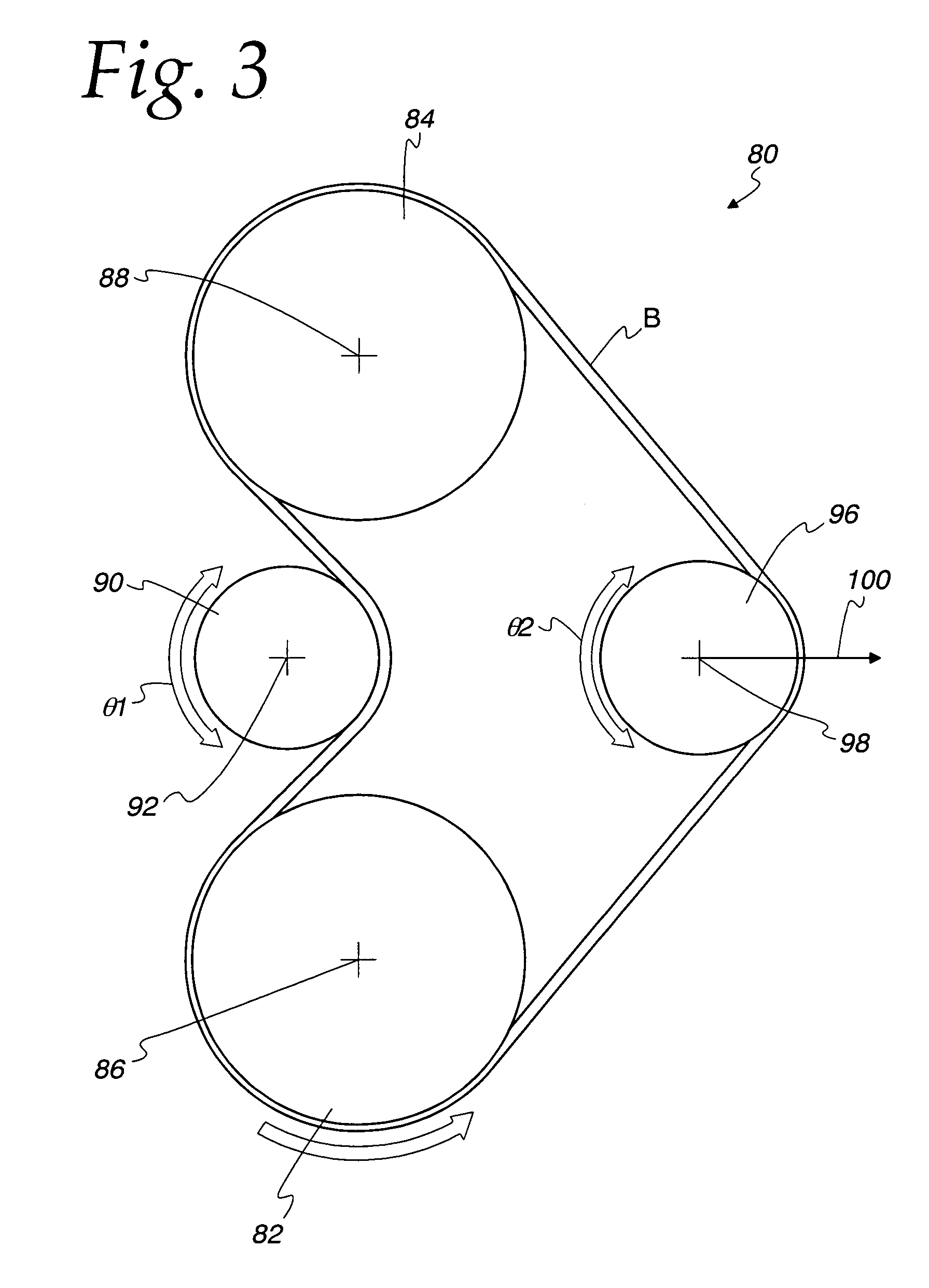Rubber composition and power transmission belt incorporating the rubber composition
a technology of composition and power transmission belt, applied in the field of rubber composition, can solve the problems of engine vibration more significantly during operation, premature cracking of rubber in normal operation, and general adverse effects of bending properties of reinforced rubber
- Summary
- Abstract
- Description
- Claims
- Application Information
AI Technical Summary
Benefits of technology
Problems solved by technology
Method used
Image
Examples
Embodiment Construction
, which had blended nylon short fibers and a solid lubricant in EPDM, the friction coefficients were low, with the elongation at break maintained at a high level. These compositions proved suitable for use to define a component of a power transmission belt. It is noted that the reduction in the friction coefficients resulting from the use of graphite and PTFE was higher than resulted from using molybdenum disulfide.
[0080] Additional comparative testing was undertaken with respect to Inventive Examples 9-14 and Comparative Examples 8-16, having a composition as set forth in the following Table 2.
TABLE 2(Parts by mass)Comparative ExamplesInventive Examples891011121314151691011121314EPDM100100Nylon 66 Short Fiber 205050 5 15———— 5030202020 10Aramid Short Fiber——————10—10——————Cotton Short Fiber———————10———————Carbon Black N330 555555——40555540 4540405050 10Graphite—— 512012030——30 103030——100Molybdenum Disulfide————————————30——PTFE—————————————30—Paraffin-based Oil 5 5dicumyl Peroxid...
PUM
| Property | Measurement | Unit |
|---|---|---|
| Length | aaaaa | aaaaa |
| Percent by mass | aaaaa | aaaaa |
| Percent by mass | aaaaa | aaaaa |
Abstract
Description
Claims
Application Information
 Login to View More
Login to View More - R&D
- Intellectual Property
- Life Sciences
- Materials
- Tech Scout
- Unparalleled Data Quality
- Higher Quality Content
- 60% Fewer Hallucinations
Browse by: Latest US Patents, China's latest patents, Technical Efficacy Thesaurus, Application Domain, Technology Topic, Popular Technical Reports.
© 2025 PatSnap. All rights reserved.Legal|Privacy policy|Modern Slavery Act Transparency Statement|Sitemap|About US| Contact US: help@patsnap.com



